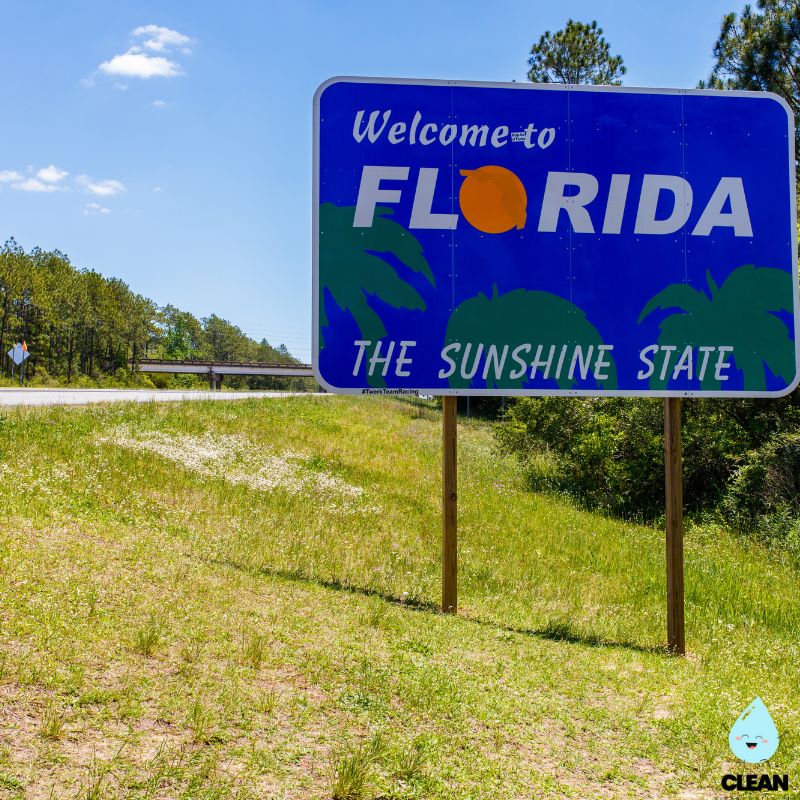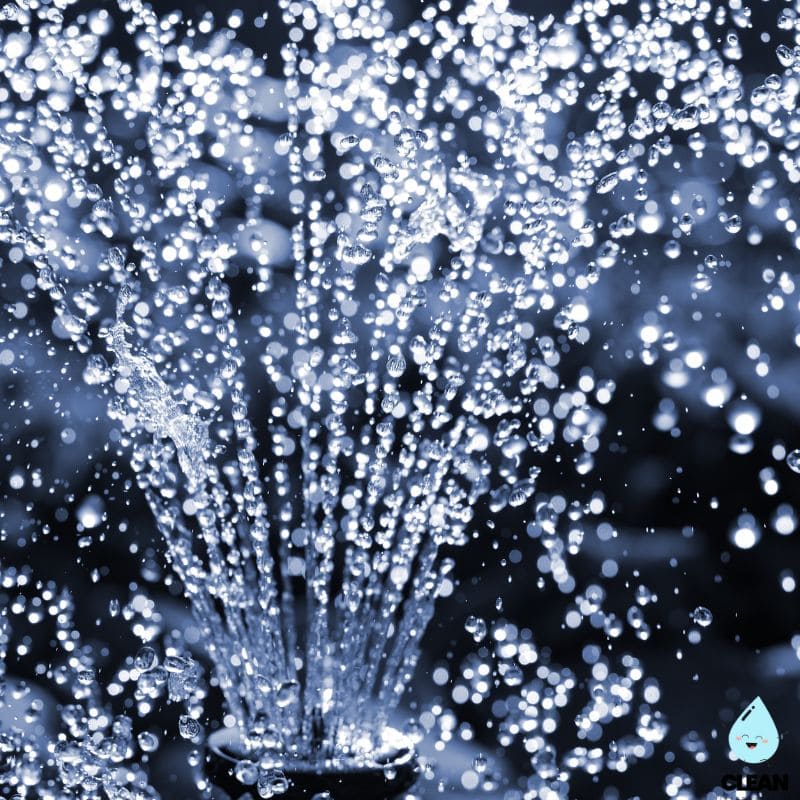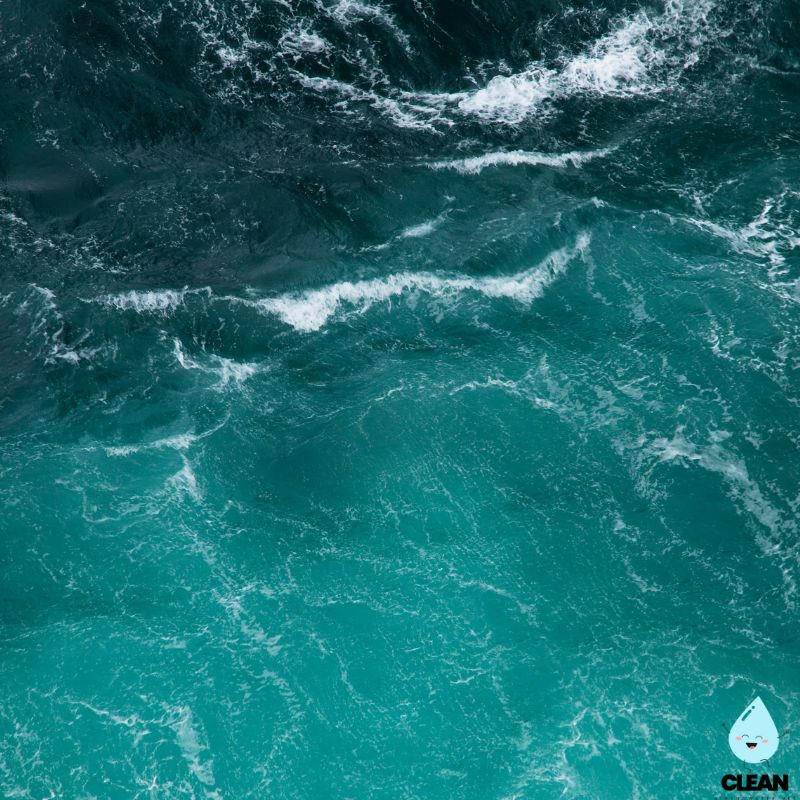Florida Water Quality at a Glance
major concerns
Is Florida Water Safe to Drink?
Generally Yes, With Significant Caution – Most Florida water systems meet federal standards, but the state faces widespread PFAS contamination affecting 8.9 million residents. Miami area has some of the highest documented PFAS levels in the U.S., with 47 ppt PFOS at Miami International Airport and 58 ppt at Miami Beach. Spring water contamination is particularly concerning since springs provide 90% of Florida’s drinking water.
⚠️ Key Concerns for Florida Residents
- PFAS “Forever Chemicals”: 8.9 million Floridians exposed; Miami area records highest levels in state at 47-58 ppt
- Spring Water Impact: 63% of spring vents contaminated – critical since springs provide 90% of Florida’s drinking water
- Water Supply Shortage: Florida faces potential shortages as early as 2025, requiring $1.7 billion investment through 2040
- Infrastructure Needs: $22 billion required over 20 years for drinking water infrastructure improvements
Read the full report below for detailed analysis, city-specific data, and actionable recommendations for Florida residents.
Florida – The Sunshine State – Water Quality Report 2025: PFAS Testing, Infrastructure Concerns & Safety across your state
Florida’s water infrastructure serves approximately 22.6 million residents and millions of visitors annually across diverse geographical regions, from the Panhandle in the north to the Everglades and Florida Keys in the south. The state operates through a complex network of over 5,800 public water systems, ranging from large municipal utilities like Miami-Dade Water and Sewer Department, which serves over 2.4 million customers, to smaller community systems providing essential services to coastal and rural areas. Florida’s water sources include the Floridan Aquifer system, numerous springs, rivers, lakes, and increasingly, alternative sources such as reclaimed water and desalination facilities along the coast.
Despite abundant groundwater resources and innovative water management, Florida faces significant infrastructure challenges. The American Society of Civil Engineers’ 2025 Infrastructure Report Card indicates that Florida needs approximately $22 billion over the next 20 years for drinking water infrastructure improvements. The state confronts emerging contaminant concerns including PFAS “forever chemicals,” with Miami area recording some of the highest documented PFAS levels in Florida, including 47 ppt of PFOS detected in 2013 at Miami International Airport and 58 ppt of PFOS detected at Miami Beach in 2014. Florida has received $118.8 million in federal infrastructure investments for fiscal year 2025 from the Biden-Harris Administration’s Bipartisan Infrastructure Law to address these challenges, focusing on drinking water safety, wastewater treatment upgrades, and emerging contaminant removal. Florida’s innovative approach to water management includes leading the nation in water reclamation and reuse, with 35% of all water supply projects utilizing reclaimed water.

Florida Water Quality: Current Status (2024-2025)
Statewide Compliance and Testing
- Overall Compliance: The majority of Florida’s 5,800 public water systems meet federal Safe Drinking Water Act standards, though the state faces potential water supply shortages as early as 2025 due to rapid population growth and climate challenges.
- PFAS Monitoring: Florida has documented some of the highest PFAS concentrations in the nation, particularly in the Miami area with 47 ppt of PFOS detected at Miami International Airport and 58 ppt at Miami Beach, well above new EPA limits of 4 ppt. Recent data shows 8.9 million Floridians have PFAS contamination in their drinking water systems.
- Infrastructure Investment: Over $118.8 million in federal funding for fiscal year 2025 through the Bipartisan Infrastructure Law has been allocated to Florida for water infrastructure improvements, with additional state investments from Seminole gaming compact revenues.
Major Water Sources and Challenges
- Floridan Aquifer System: Primary groundwater source for most of the state, providing some of the cleanest water in the country but facing increasing demand and potential saltwater intrusion in coastal areas.
- Surface Water and Springs: Over 1,000 freshwater springs provide 90% of drinking water, but recent University of Florida studies found PFAS contamination in 63% of spring vent samples and 68% of spring run samples.
- Water Supply Shortage Projections: Florida Office of Economic and Demographic Research projects potential water supply shortages as early as 2025, requiring an estimated $1.7 billion investment through 2040 to avoid significant shortfalls.
Emerging Contaminant Response
- PFAS Regulation Implementation: New EPA drinking water standards for PFOA and PFOS (4 parts per trillion) were finalized in April 2024, though EPA announced in May 2025 it plans to extend compliance deadlines to 2031 and reconsider regulations for four other PFAS compounds.
- Treatment Technology Deployment: Utilities like Tampa Bay Water are implementing advanced treatment technologies including activated carbon filtration and reverse osmosis systems to remove PFAS and other emerging contaminants.
- State Legislative Response: Florida Department of Environmental Protection must report to the Legislature by January 2025 with proposed PFAS standards, following 2022 legislation requiring comprehensive state-level PFAS regulation.
Water Management Innovation
- Reclaimed Water Leadership: Florida leads the nation in water reclamation and reuse, with 35% of all water supply projects utilizing reclaimed water for irrigation, groundwater recharge, and industrial uses.
- Five Water Management Districts: Regional approach to water resource management through Northwest Florida, Suwannee River, St. Johns River, Southwest Florida, and South Florida Water Management Districts.
- Alternative Water Sources: Increasing investment in desalination, aquifer storage and recovery, and advanced water treatment to meet growing demand while protecting natural systems.
Looking Forward: 2025-2030
Florida’s water quality landscape faces unprecedented challenges as the state experiences continued rapid population growth with projections to reach 26.4 million by 2040 while confronting potential water supply shortages as early as 2025 and emerging contaminant concerns. The state’s innovative approach to water management, including leadership in reclaimed water use and regional water management districts, positions Florida as a model for sustainable water resource development. However, successful implementation will require continued collaboration between state regulators, water management districts, utilities, and communities to ensure adequate water supplies while addressing PFAS contamination and aging infrastructure. Florida’s $1.7 billion investment needs through 2040, combined with federal infrastructure funding, represents a critical period for modernizing the state’s water systems to meet both current and future demands.
Recommendations for Florida Residents

Know Your Water Source
Contact your water utility to request annual water quality reports and ask about PFAS testing results. Visit the Florida Department of Environmental Protection’s database to access your local system’s testing data and understand any contaminants of concern in your area.

Support Water Conservation
Practice water conservation to help Florida manage projected supply shortages. Support utility investments in reclaimed water systems, efficient irrigation, and drought-resistant landscaping to reduce demand on freshwater sources.

Consider PFAS-Certified Filtration
For areas with known PFAS contamination, especially in South Florida, consider NSF-certified activated carbon or reverse osmosis filters specifically tested for PFAS removal. These can provide additional protection while utilities implement treatment upgrades.

Report Water Quality Concerns
Contact your local water utility immediately for taste, odor, or color concerns. Report suspected contamination to the Florida Department of Environmental Protection or your local health department for investigation and follow-up.

Stay Informed About Local Planning
Participate in your water management district’s planning processes and support regional water supply development. Stay updated on local utility rate structures and infrastructure improvement projects in your community.
Florida Cities We Cover
Hialeah Water Quality
Comprehensive analysis of Hialeah’s water infrastructure, treatment processes, and compliance with emerging contaminant regulations in Miami-Dade County’s water system.
Jacksonville Water Quality
Detailed assessment of JEA’s water systems, covering the largest city in Florida by area with comprehensive water quality testing and treatment infrastructure.
Miami Water Quality
In-depth analysis of Miami-Dade Water and Sewer Department, serving over 2.4 million customers with focus on PFAS contamination and saltwater intrusion challenges.
Orlando Water Quality
Comprehensive evaluation of Orlando Utilities Commission water systems, covering Central Florida’s water quality, treatment technologies, and infrastructure modernization.
Tampa Water Quality
Detailed assessment of Tampa Bay Water and Tampa Water Department systems, including innovative water supply development and PFAS treatment implementation.
Frequently Asked Questions
Is Florida’s tap water safe to drink?
Most of Florida’s 5,800 public water systems meet federal drinking water standards and are safe for consumption. However, some areas have elevated PFAS levels, particularly in South Florida.
The Florida Department of Environmental Protection and local health departments require comprehensive testing across all public water systems. Florida leads the nation in water reclamation and alternative water sources, but faces challenges from rapid population growth and potential water supply shortages projected as early as 2025. The state has received over $118.8 million in federal funding for fiscal year 2025 to address emerging contaminants and infrastructure needs. Residents should review their utility’s annual water quality report and stay informed about local conditions, especially regarding PFAS contamination in areas like Miami-Dade County.
What are Florida’s main water quality challenges?
Florida faces several interconnected water quality challenges: PFAS contamination, projected water supply shortages, and aging infrastructure needs.
PFAS contamination is particularly significant in South Florida, with Miami area recording some of the highest documented levels in the state. University of Florida research found PFAS in 63% of spring vent samples statewide. Additionally, Florida projects potential water supply shortages as early as 2025, requiring $1.7 billion in investments through 2040. The state needs approximately $22 billion over 20 years for drinking water infrastructure improvements. Florida’s rapid population growth, climate change impacts, and coastal development add pressure to water resources while threatening natural systems like springs and aquifers.
How can I find out about my local water quality?
Florida residents can access comprehensive water quality information through several resources:
• Annual Water Quality Reports: Contact your water utility directly for their Consumer Confidence Report, which details all testing results and any violations or concerns
• Florida DEP Database: Visit the Florida Department of Environmental Protection’s online drinking water database to access testing results and compliance information for your local water system
• County Health Departments: In six counties (Hillsborough, Miami-Dade, Palm Beach, Polk, Sarasota, and Volusia), local health departments provide water system oversight
• Water Management Districts: Contact your regional water management district for information about water supply planning and conservation programs in your area
What makes Florida’s water management unique?
Florida employs several innovative approaches to water management:
Five Regional Water Management Districts: Northwest Florida, Suwannee River, St. Johns River, Southwest Florida, and South Florida districts provide regionally-tailored water resource management
Water Reclamation Leadership: Florida leads the nation in water reuse, with 35% of all water supply projects utilizing reclaimed water for irrigation, groundwater recharge, and industrial uses
Alternative Water Sources: The state increasingly uses desalination, aquifer storage and recovery, and advanced treatment technologies to diversify water supplies
Comprehensive Planning: Coordinated statewide approach balancing water supply and demand while protecting natural systems like the Everglades and freshwater springs
The state’s integrated approach helps ensure sustainable water resources for both human needs and environmental protection, though continued investment and innovation will be essential to meet future challenges.
Contaminants of Concern

PFAS “Forever Chemicals”
Source: Military installations including MacDill Air Force Base (517,000 ppt PFOS detected), airports including Miami International Airport, firefighting foam use, and industrial manufacturing throughout the state
Health Effects: Linked to kidney and testicular cancer, liver damage, immune system suppression, high cholesterol, and developmental effects in children
Current Status: Miami area has highest documented PFAS levels in Florida with 47 ppt PFOS at Miami International Airport and 58 ppt at Miami Beach, well above EPA’s 4 ppt limit. University of Florida studies found PFAS in 63% of spring samples statewide. Environmental Working Group data shows 8.9 million Floridians exposed to PFAS contamination in their drinking water. EPA Limits: 4 ppt for PFOA and PFOS individually, with hazard index for other PFAS compounds

Saltwater Intrusion
Source: Over-pumping of coastal aquifers, sea level rise, and development in coastal areas allowing saltwater to migrate into freshwater aquifer systems
Health Effects: High sodium levels can affect individuals with hypertension or heart conditions, while chloride can cause corrosion of plumbing systems and affect taste
Current Status: Particularly concerning in South Florida and coastal areas where utilities monitor chloride levels and implement alternative water sources. Water management districts work to balance pumping rates with aquifer protection Regulatory Response: Water management districts set minimum flow levels and implement wellhead protection programs
Please read – our information
The information presented on cleanairandwater.net is compiled from official water quality reports, trusted news sources, government websites, and public health resources. While we strive for accuracy and thoroughness in our presentations, we are not scientists, engineers, or qualified water quality professionals.
Our mission is to present water quality information in an accessible, real-world format that helps people understand what’s in their water and make informed decisions about their health and safety. We believe that complex environmental information should be available to everyone in a format that’s easy to understand.
We make every effort to ensure our content is current and accurate, but we cannot guarantee that all information is complete or error-free. This website should not replace official communications from your local water utility or health department. We always recommend consulting official sources for the most up-to-date information regarding your specific water system.
Clean Air and Water is not liable for any unintentional errors, omissions, or outdated information. The content on this site is provided for informational purposes only and should not be considered professional advice.

